Introduction: The Rising Importance of Mental Health in the Workplace
Mental health is no longer just a personal issue; it’s a critical business priority. With nearly 1 in 5 employees facing mental health challenges, the role of HR is evolving from traditional functions to becoming champions of employee well-being.
Today’s HR teams are reshaping workplace culture—introducing flexible policies, fostering open dialogues, and integrating tools like OKR solutions and goal management software. These tools don’t just streamline work; they align personal and professional goals, reduce stress, and promote a healthier work-life balance.
In this blog, we’ll explore how HR can lead the charge in mental health advocacy, using innovative strategies and digital tools to create a thriving workplace where mental well-being truly matters.
The Mental Health Landscape in Today’s Workplace
The modern workplace is often a pressure cooker of tight deadlines, long hours, and constant connectivity. Employees are grappling with more than just their workloads; they’re dealing with anxiety, burnout, and the blurred lines between work and personal life, especially in the era of remote work.
Recent surveys highlight a stark reality: employees are more stressed than ever, with burnout rates soaring across industries. The hidden toll of mental health issues—lower productivity, increased absenteeism, and high turnover—is costing companies more than they realise.
Yet, the biggest challenge isn’t just the mental health crisis itself; it’s the silence that surrounds it. Despite growing awareness, many employees still feel uncomfortable speaking up, fearing judgement or repercussions. This stigma creates a barrier to seeking help, leaving HR with the critical task of breaking down these walls.
By understanding the mental health landscape and embracing proactive, empathetic approaches, HR can turn the tide—creating workplaces where employees feel safe, supported, and empowered to thrive.
HR’s Role in Fostering a Supportive Environment: 10 Steps to Create a Mentally Healthy Workplace
- Develop Clear Mental Health Policies:
Establish clear, accessible policies that prioritise mental health, such as flexible working hours, mental health days, and remote work options. - Create Safe Spaces for Open Dialogue
Foster an environment where employees feel safe discussing mental health issues without fear of judgement or repercussions. - Implement Regular Mental Health Check-ins
Encourage managers to conduct regular one-on-one check-ins to understand employee well-being and provide support when needed. - Provide Access to Mental Health Resources
Offer resources like Employee Assistance Programs (EAPs), counselling services, and workshops focused on stress management and resilience. - Train Managers in Mental Health Awareness
Equip managers with the skills to recognize signs of mental distress and handle sensitive conversations with empathy and discretion. - Promote Work-Life Balance
Encourage practices that help employees maintain a healthy work-life balance, such as disconnecting after work hours and managing workloads effectively. - Introduce Mental Health Ambassadors
Designate trained employees or HR representatives as mental health ambassadors to advocate for well-being and provide peer support. - Use Data to Drive Mental Health Strategies
Collect anonymous feedback through surveys and use data to identify stress points, tailor initiatives, and track the impact of mental health programs. - Celebrate Small Wins and Milestones
Recognize and celebrate employees’ achievements, both personal and professional, to boost morale and reinforce a positive work environment. - Lead with Empathy and Support
Set the tone from the top—leadership should model empathetic behaviour, prioritise well-being, and be transparent about mental health initiatives.
Leveraging OKRs to Enhance Employee Well-being
Objectives and Key Results (OKRs) are traditionally known for driving business performance, but they can also be powerful tools for improving employee mental health. By setting clear, achievable goals, OKRs help reduce stress and foster a sense of purpose and balance in the workplace. Here’s how HR can leverage OKRs and goal management software to promote well-being:
Align Personal and Professional Goals with OKR Solutions
Use OKR solutions to help employees set personal well-being goals alongside professional objectives. This alignment, achievable through top OKR apps like Gtmhub or Weekdone, ensures employees feel supported in both their work and personal lives.
Reduce Stress Through Clear OKRs
OKR frameworks simplify goal-setting by breaking down tasks into manageable steps, reducing the overwhelm often associated with complex projects. The best OKR apps offer intuitive interfaces that make it easy for employees to track their progress, minimizing stress.
Collaborate on Goal Setting with Goal Management Software
Incorporate goal management software like 10xwinners or Betterworks to facilitate collaborative goal-setting. This involvement boosts engagement and helps employees feel more connected to their objectives, making mental health a shared responsibility.
Set Balanced and Realistic OKRs
Avoid burnout by encouraging realistic OKRs that incorporate mental health considerations. Tools like Lattice can help teams craft balanced goals that reflect both productivity and well-being priorities.
Use Feedback Loops Built into OKR Apps
Regular feedback is a cornerstone of effective OKR use. Apps like Koan offer continuous feedback and recognition features that keep employees motivated and reduce anxiety about their progress.
Integrate Well-being Metrics into OKRs with the Best Apps
Leading OKR tracking softwares now offer well-being integrations, allowing teams to track wellness metrics alongside performance. Features such as mood tracking in apps like Leapsome add an extra layer of support for mental health.
Create Transparency and Reduce Anxiety with OKR Solutions
Transparency is key to reducing workplace anxiety. OKR apps help visualize how individual goals tie into company objectives, fostering a clear sense of purpose and reducing uncertainty.
Flexibility in Goal Adjustments with Goal Management Software
Life changes, and so can OKRs. Many top OKR apps, such as WorkBoard, offer flexibility in adjusting goals to accommodate personal challenges, keeping well-being at the forefront.
Promote Accountability in Mental Health through OKRs
OKRs are not just for productivity—they can drive accountability in mental health initiatives, ensuring that well-being goals are tracked and prioritised alongside business metrics.
Lead by Example with Digital OKR Tools
Leaders should model the use of OKR solutions that prioritise mental health, showcasing a commitment to well-being that sets the tone for the entire organisation.
Top OKR Solutions and Goal Management Software for Mental Health Integration
As organisations increasingly recognize the importance of mental health, leveraging the right OKR solutions and goal management software becomes crucial. Here are some of the best tools that not only help streamline goal-setting but also integrate mental health considerations into the workplace
10xWinners
10xWinners is an easy-to-use, ChatGPT-AI enabled OKR platform designed to help teams set, track, and achieve their goals faster. This comprehensive software offers customizable templates, automated reminders, and advanced data visualisation capabilities, making it simple for businesses to implement the OKR framework.
With real-time progress monitoring, 10xWinners ensures that mental health initiatives can be seamlessly integrated into overall goal-setting strategies, promoting a balanced approach to productivity and well-being.
Perdoo
Profit.co provides an all-in-one OKR management solution with features that include detailed progress tracking, performance insights, and an intuitive user experience. It’s designed to help organizations of all sizes set clear, actionable objectives and keep everyone on the same page.
Clickup
ClickUp is a versatile project management tool that also excels in OKR tracking. Its customizable dashboards, goal-tracking features, and seamless integration with other tools make it a great choice for teams of all sizes. ClickUp not only helps track objectives but also allows teams to manage tasks, documents, and timelines in one centralized platform, boosting overall productivity.
Lattice
Lattice offers an all-in-one platform that combines performance management with employee engagement tools. Its OKR features enable teams to set and track personal well-being objectives alongside professional targets. Lattice also includes feedback mechanisms and pulse surveys, providing valuable insights into employee mental health.
Betterworks
Betterworks is designed to foster a culture of continuous feedback and goal alignment. It provides an intuitive platform for setting OKRs that can include mental health initiatives, such as reducing overtime or increasing participation in wellness programs. The software’s emphasis on alignment helps teams prioritise well-being as part of their core objectives.
15Five
15Five integrates performance management with employee wellness, offering OKR features that promote mental health. Its check-in capabilities allow employees to reflect on their well-being regularly, while goal-setting tools enable the inclusion of personal health objectives. This creates a supportive environment where mental health is valued.
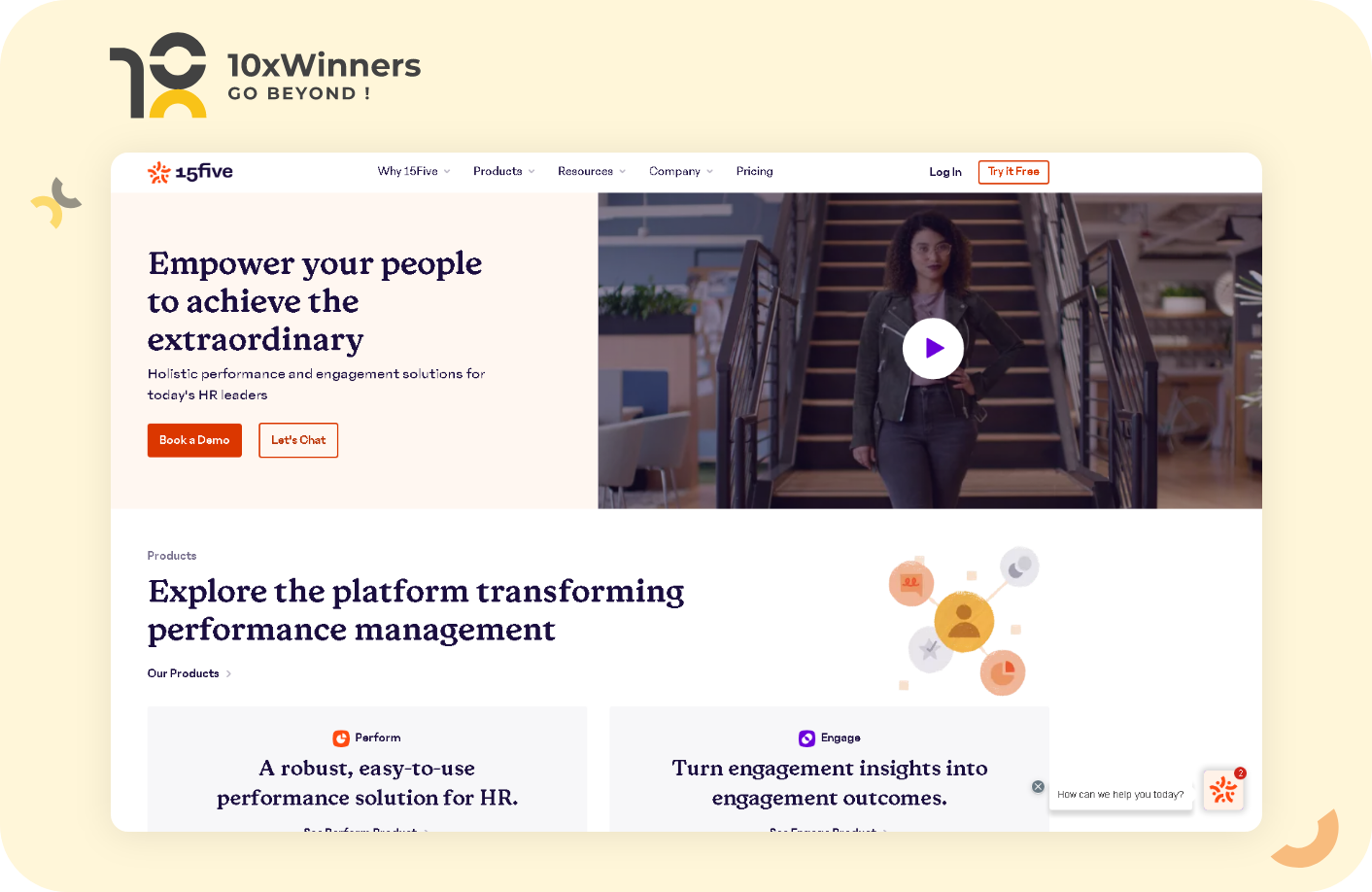
Profit.co
Profit.co is one of the best OKR software for enterprises integrated with employee development, employee engagement, and task management. You can make OKRs at all levels of your company while assuring complete alignment throughout your company.
Weekdone
Weekdone offers a simple yet effective platform for setting and tracking OKRs. With a user-friendly interface, this tool helps teams stay aligned on their goals and provides valuable insights through visual reports and dashboards. It’s ideal for companies looking to maintain focus and transparency.
Asana
While primarily known as a project management tool, Asana’s goal-setting capabilities can be adapted for OKRs. Teams can create dedicated projects for wellness initiatives, tracking progress and encouraging collaboration on mental health goals. This flexibility makes it a useful addition to any HR toolkit.
Encouraging a Culture of Open Communication
Creating a supportive environment for mental health requires fostering a culture of open communication within the workplace. HR plays a pivotal role in breaking down barriers and encouraging honest conversations about mental health. Here are key strategies to promote this culture:
Normalise Mental Health Conversations
Encourage discussions about mental health by integrating these topics into regular team meetings, training sessions, and company communications. By normalising these conversations, employees will feel more comfortable sharing their experiences and challenges.
Provide Training for Managers
Equip managers with the skills needed to handle sensitive conversations about mental health. Training sessions can include active listening techniques, recognizing signs of distress, and offering appropriate support, ensuring managers are prepared to foster an open dialogue.
Implement Anonymous Feedback Channels
Create anonymous feedback channels where employees can voice their concerns and share experiences without fear of judgement. Tools like employee surveys or suggestion boxes allow for candid communication, helping HR gauge the overall mental health climate in the organisation.
Establish Mental Health Awareness Programs
Implement programs that focus on mental health awareness, including workshops, webinars, and resources. By educating employees on mental health topics, organisations can create a more informed and empathetic workforce that understands the importance of open communication.
Promote Peer Support Initiatives
Encourage the formation of peer support groups or buddy systems where employees can share their experiences and provide support to one another. This creates a safe space for conversations about mental health and fosters a sense of community within the workplace.
Celebrate Mental Health Days
Designate specific days focused on mental health awareness and self-care, allowing employees to participate in activities that promote well-being. These initiatives can help reinforce the importance of mental health and encourage open discussions about self-care practices.
Lead by Example
Leadership should model open communication about mental health by sharing their own experiences and challenges. When leaders demonstrate vulnerability and prioritise their mental well-being, it encourages employees to do the same.
Provide Resources for Professional Support
Ensure employees are aware of available mental health resources, such as counselling services and Employee Assistance Programs (EAPs). Make this information easily accessible, empowering employees to seek help when needed.
Foster an Inclusive Environment
Encourage diversity and inclusivity within the workplace, where all voices are heard and valued. Creating an inclusive culture can help employees feel safe sharing their mental health challenges, knowing they will be met with understanding and support.
Regularly Assess the Communication Culture
Conduct regular assessments of the communication culture within the organisation. Use surveys and feedback mechanisms to understand how comfortable employees feel discussing mental health and identify areas for improvement.
The Importance of Regular Training and Workshops
Regular training and workshops are vital in creating a workplace that truly values mental health. These sessions offer employees a chance to learn about mental health issues, recognize signs of distress, and develop coping strategies. By breaking the stigma surrounding these conversations, we can foster a more empathetic environment. For instance, stress management workshops that focus on mindfulness or time management can give employees practical tools to handle the pressures of work. Additionally, training for managers is crucial; they need to be equipped with the skills to support their teams effectively. Bringing in mental health professionals for guest talks can provide valuable insights, while peer-led discussions help build a sense of community among employees.
Moreover, integrating mental health topics into existing training programs reinforces their importance across the board. Providing continuous learning resources keeps everyone informed about best practices. Regular feedback after these sessions helps ensure the content remains relevant and engaging. By encouraging a culture of lifelong learning, organizations can motivate employees to participate actively in these initiatives. Ultimately, creating a supportive network for employees to connect and share resources enhances the overall mental health landscape, making it clear that well-being is a priority for everyone involved.
Measuring the Impact of Mental Health Initiatives
Measuring the effectiveness of mental health initiatives is essential for organizations committed to fostering a supportive work environment. Here are key strategies for HR to effectively assess the impact of these initiatives:
Conduct Regular Employee Surveys
Gather feedback through surveys that focus on well-being and satisfaction. Ask targeted questions about mental health resources, workplace culture, and communication to understand employee perceptions.
Analyze Key Performance Indicators (KPIs)
Track relevant KPIs, such as employee engagement, absenteeism, and productivity, to evaluate the effectiveness of mental health programs. Changes in absenteeism rates can be particularly telling.
Organize Focus Groups
Hold focus groups to gain deeper insights into employee experiences with mental health initiatives. This qualitative data can provide valuable feedback on what’s working and what needs improvement.
Leverage Technology
Utilize OKR and goal management software that includes features for setting specific mental health goals and monitoring progress. This data-driven approach helps streamline the evaluation process.
Measure Return on Investment (ROI)
Assess the ROI of mental health initiatives by analyzing their impact on employee performance, retention rates, and overall company culture. This can justify ongoing investments in mental health resources.
Monitor Trends Over Time
Regularly review and compare data over time to identify trends in employee well-being and engagement. This long-term perspective can help gauge the sustained impact of mental health initiatives.
Adjust Programs Based on Feedback
Use the insights gathered from surveys, focus groups, and KPI analysis to make informed adjustments to mental health programs. Flexibility in response to employee needs can enhance the effectiveness of initiatives.
Promote Transparency
Share the findings with employees to demonstrate the organization’s commitment to mental health. Transparency about what is working and what is being adjusted helps build trust within the workforce.
Celebrate Successes
Recognize and celebrate improvements in employee well-being and engagement. Acknowledging successes fosters a positive atmosphere and encourages ongoing participation in mental health initiatives.
Foster a Continuous Improvement Culture
Encourage a culture where feedback is actively sought and welcomed. Regularly revisiting and refining mental health initiatives ensures they remain relevant and impactful.
Creating a Supportive Work Environment
Establishing a supportive work environment is crucial for promoting mental health and well-being among employees. Here are effective strategies that HR can implement to foster such an environment:
Encourage Work-Life Balance
Promote policies that encourage a healthy work-life balance, such as flexible work hours, remote work options, and mandatory time off. Supporting employees in managing their personal and professional lives can significantly reduce stress.
Design a Comfortable Workspace
Invest in creating a comfortable and inviting physical workspace. This includes ergonomic furniture, adequate lighting, and designated quiet areas for relaxation, all of which contribute to employee comfort and productivity.
Foster Inclusivity and Diversity
Cultivate an inclusive workplace culture that values diversity and encourages different perspectives. An inclusive environment allows employees to feel safe and respected, enhancing their overall well-being.
Provide Mental Health Resources
Ensure that employees have access to mental health resources, such as Employee Assistance Programs (EAPs), counselling services, and wellness programs. Making these resources readily available shows that the organisation prioritises mental health.
Promote Team-Building Activities
Encourage team-building activities that foster camaraderie and connection among employees. These activities can strengthen relationships and create a supportive network within the workplace.
Recognize and Reward Contributions
Acknowledge and reward employees for their hard work and contributions. Regular recognition fosters a sense of belonging and appreciation, which can positively impact mental health.
Encourage Open Feedback Channels
Create channels for open and honest feedback, allowing employees to voice their concerns and suggestions. This transparency promotes a culture where employees feel heard and valued.
Train Leaders on Mental Health Awareness
Equip leaders with the knowledge and skills to recognize and address mental health issues among their teams. Training can help managers foster a supportive environment and lead by example.
Host Regular Wellness Events
Organise wellness events, such as workshops, health fairs, and mindfulness sessions, to promote mental well-being. These events can engage employees and encourage them to prioritise their mental health.
Foster a Positive Company Culture
Promote a positive company culture that emphasises teamwork, collaboration, and support. A strong culture can enhance employee morale and contribute to overall mental well-being.
The Role of Leadership in Mental Health Advocacy
When it comes to mental health at work, leadership isn’t just about setting targets; it’s about setting the tone. Leaders play a key role in creating a culture where mental health is prioritised, not sidelined. Imagine the impact when a leader openly talks about the importance of mental well-being or shares personal challenges—it sends a powerful message that it’s okay to not be okay. By being transparent about their own struggles, leaders make it easier for everyone else to open up, creating a more authentic and connected workplace.
But it’s not just about talking the talk; leaders need to walk the walk. That means advocating for real, tangible changes like mental health days, flexible work options, and access to professional support. Creating a mental health task force isn’t just a box-ticking exercise—it’s about bringing together people from different parts of the company who are genuinely passionate about making a difference. This group can drive meaningful initiatives, keep the conversation going, and ensure that the mental health agenda isn’t just a one-time push but an ongoing commitment.
Most importantly, good leadership means listening—really listening—to what employees are saying. It’s about being open to feedback, making adjustments, and celebrating the small wins along the way. Whether it’s hosting workshops, encouraging participation in wellness events, or simply being available for a chat, leaders who genuinely care make all the difference. When employees see their leaders showing up for mental health, it’s not just policy—it’s personal. And that’s how real change happens.
Conclusion
Mental health in the workplace isn’t just a passing trend—it’s the cornerstone of a thriving, engaged, and resilient organisation. From setting thoughtful policies to encouraging open dialogue, HR and leadership play a crucial role in fostering a supportive environment where employees feel valued and empowered. Investing in mental health pays off with happier teams, improved performance, and a company culture that stands out.
Implementing these strategies—like prioritising work-life balance, hosting regular training, and using technology for goal management—helps make a real impact. Tools like 10xWinners can be game-changers in this journey, offering an easy-to-use OKR platform that helps teams set, track, and achieve their goals faster. And the best part? Organisations with up to 10 employees can take advantage of a lifetime free account, making it easier than ever to start your mental health and goal-setting initiatives without any upfront cost.
Creating a mentally healthy workplace is an ongoing commitment that starts with leadership but involves everyone. It’s about building a culture where well-being isn’t just talked about—it’s lived every day. With the right tools and strategies, we can all contribute to a work environment where mental health truly matters. Because when your team thrives, your whole organisation succeeds.
Contents



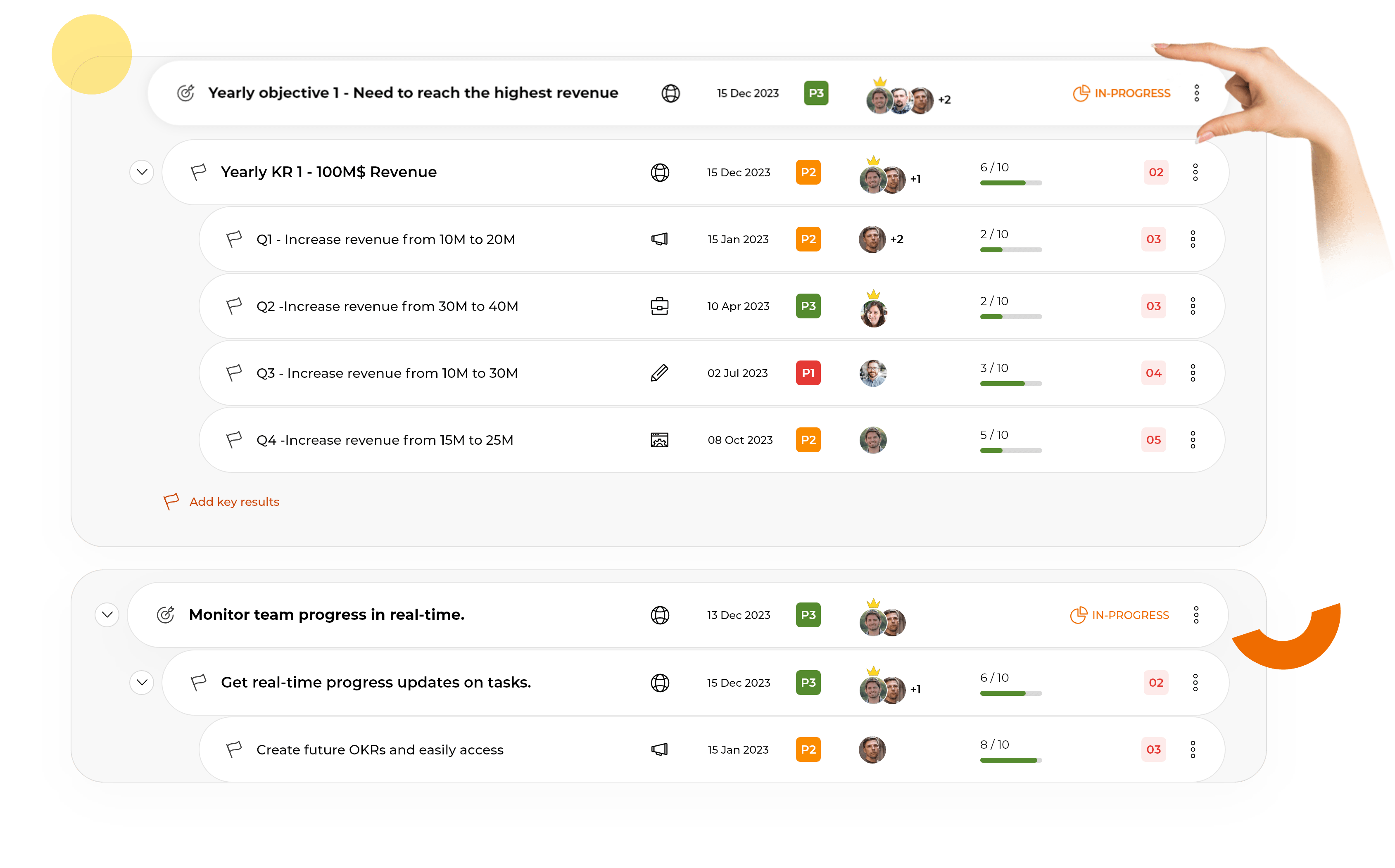

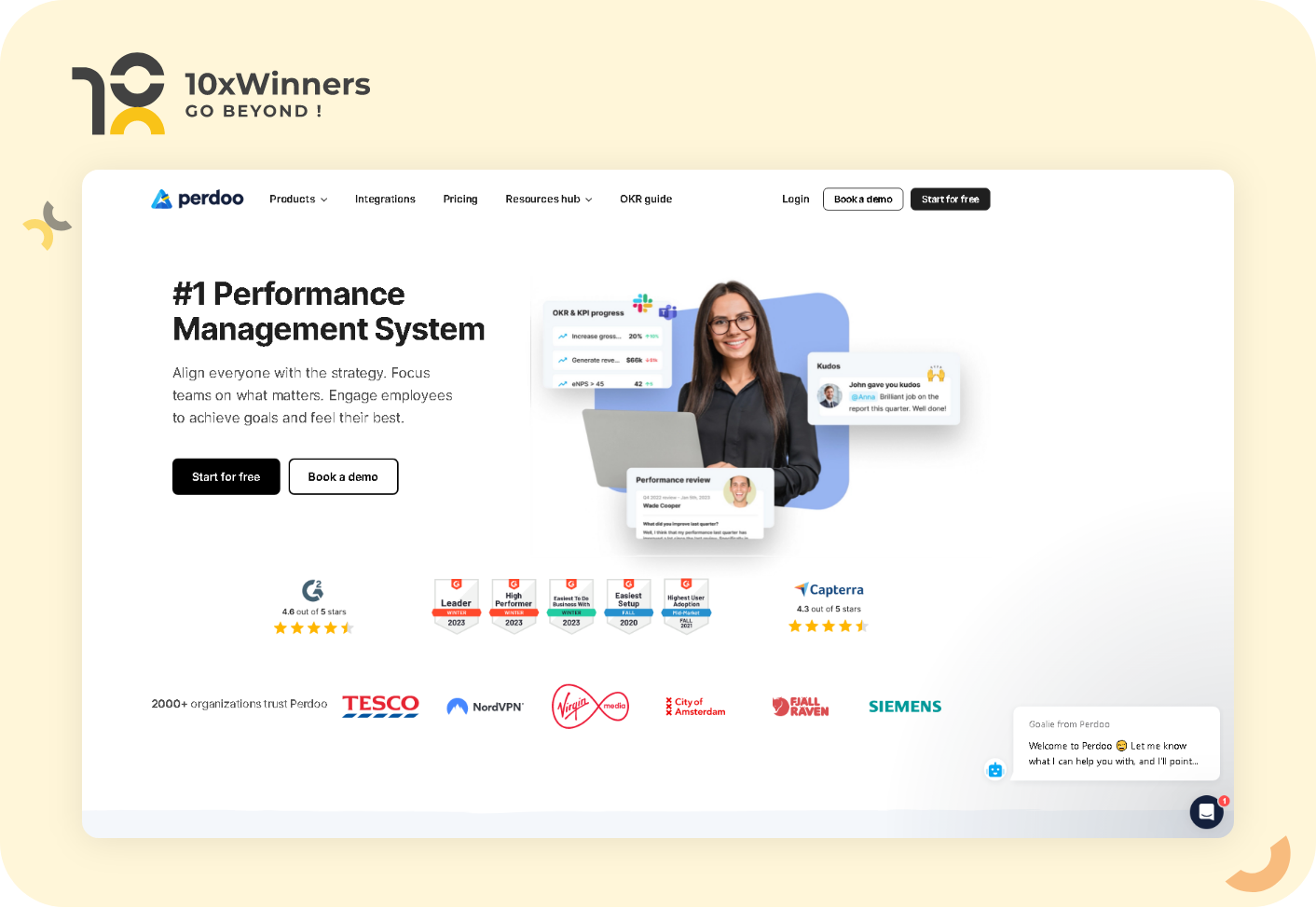
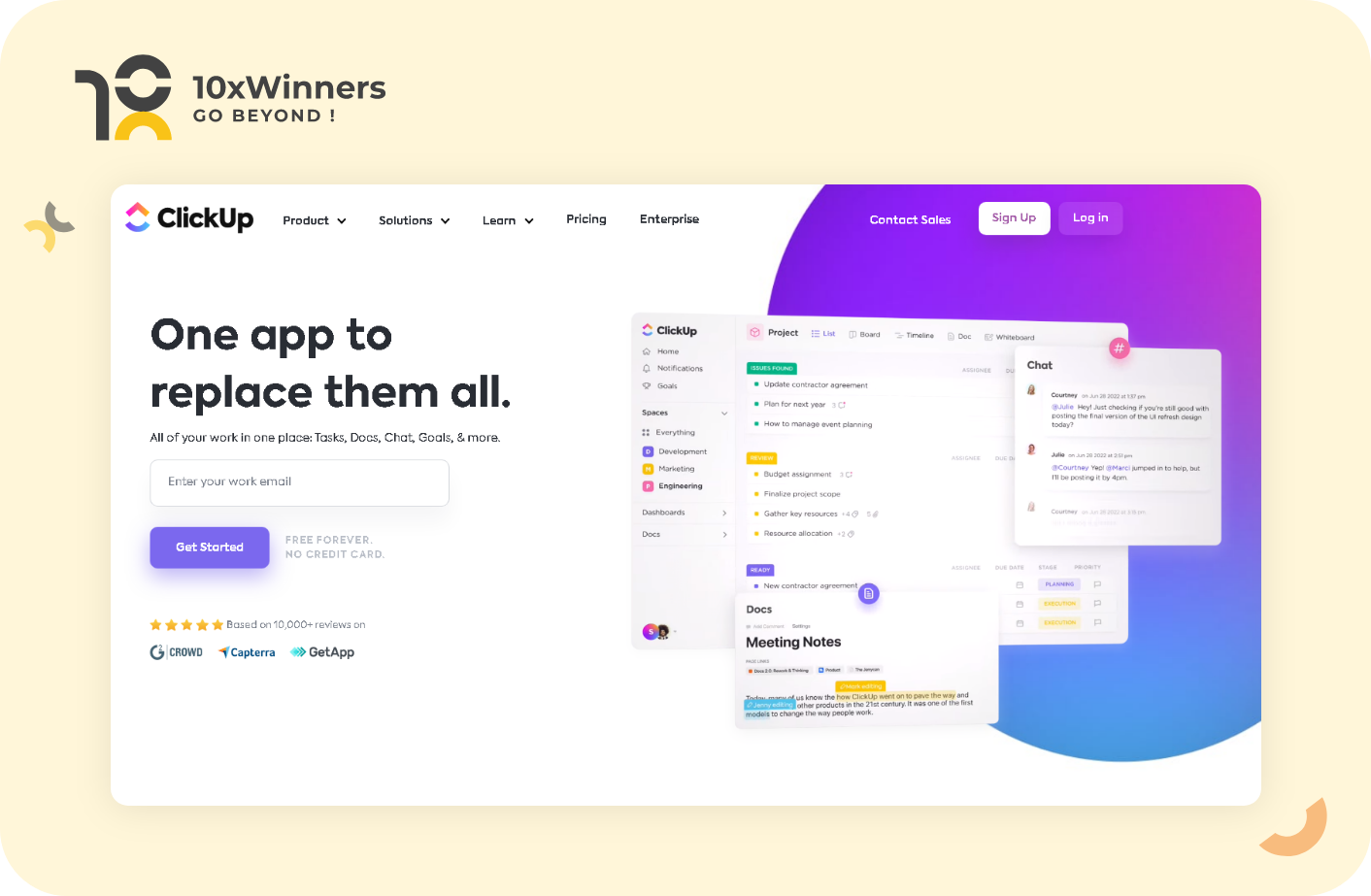
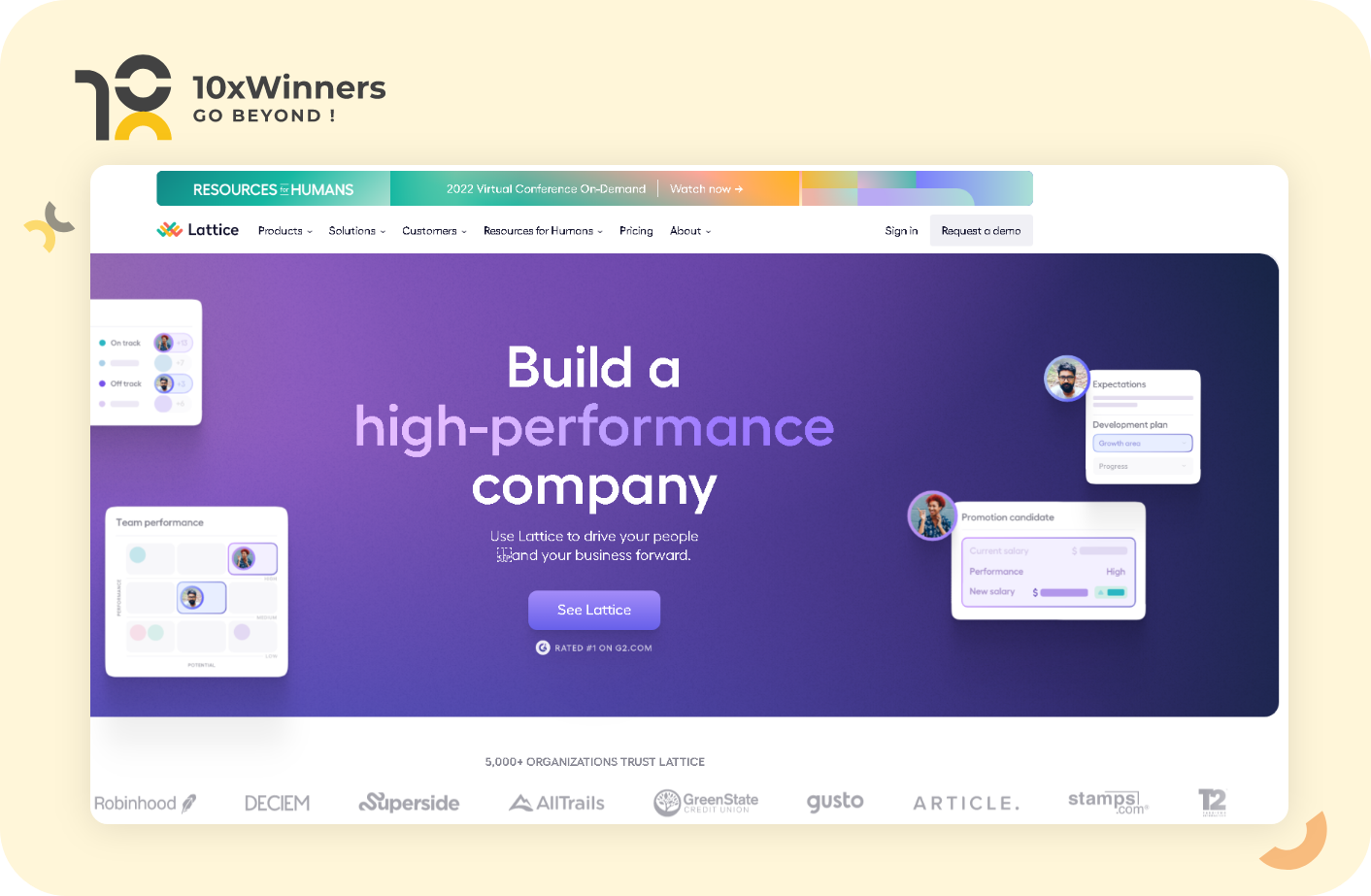
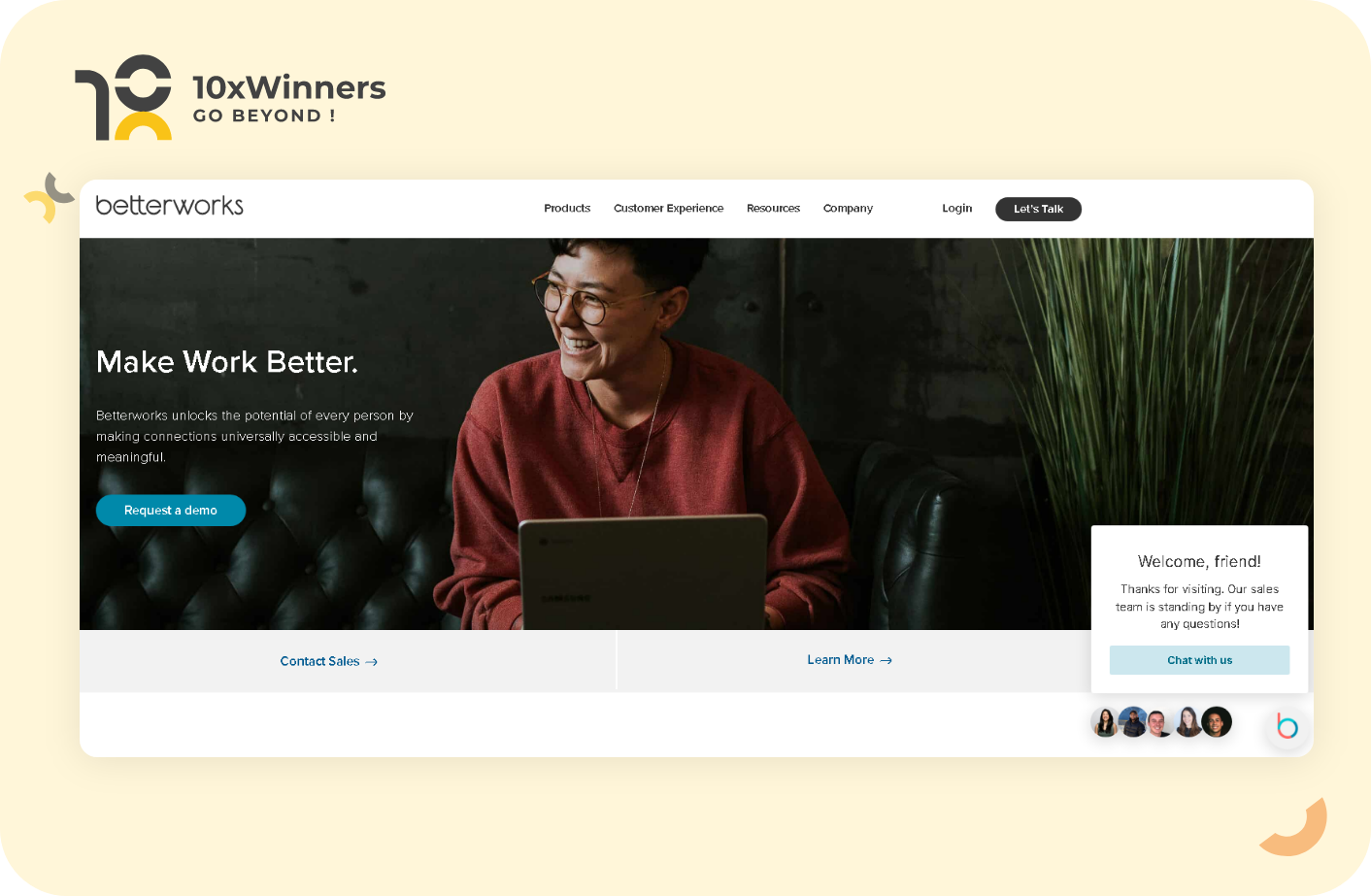
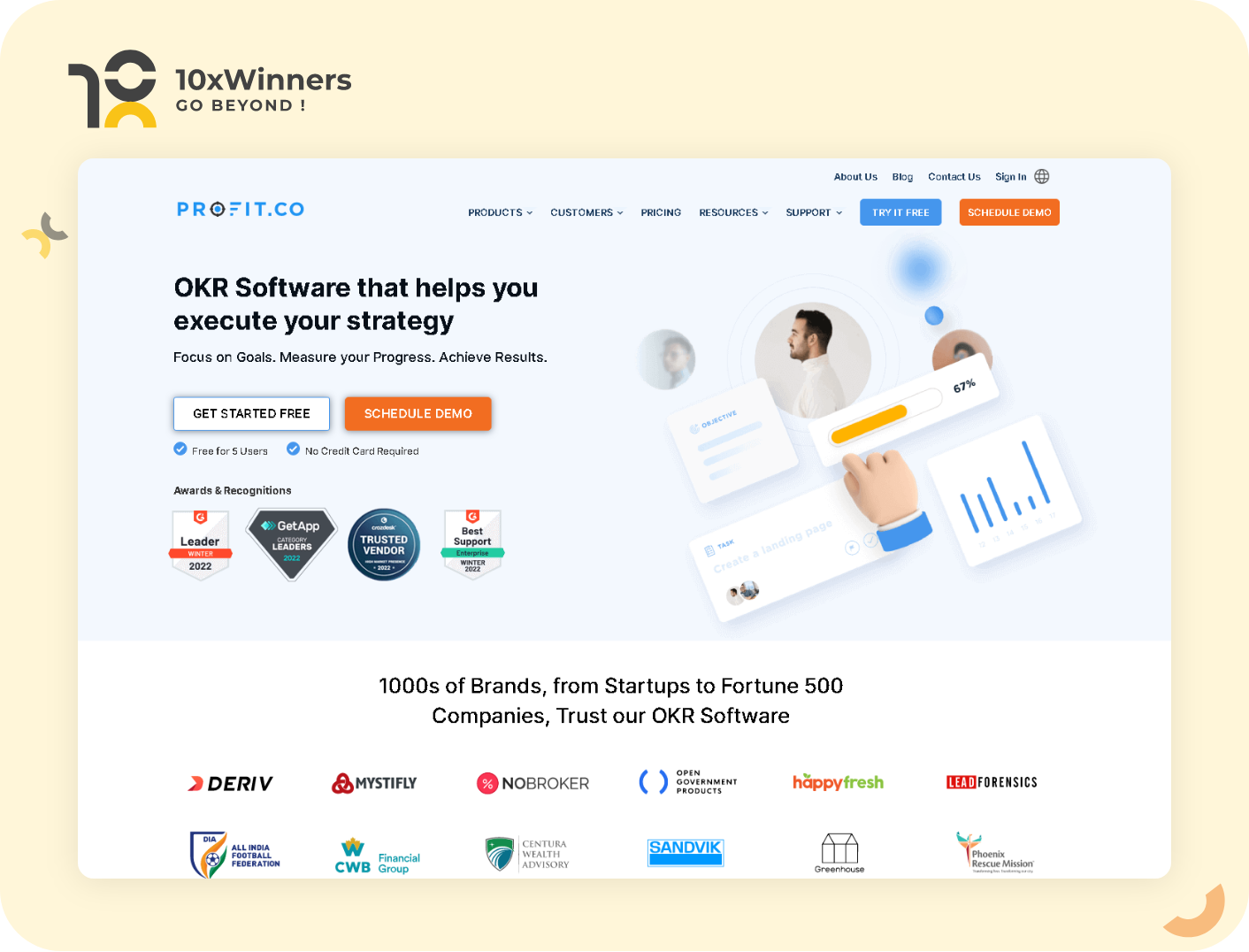
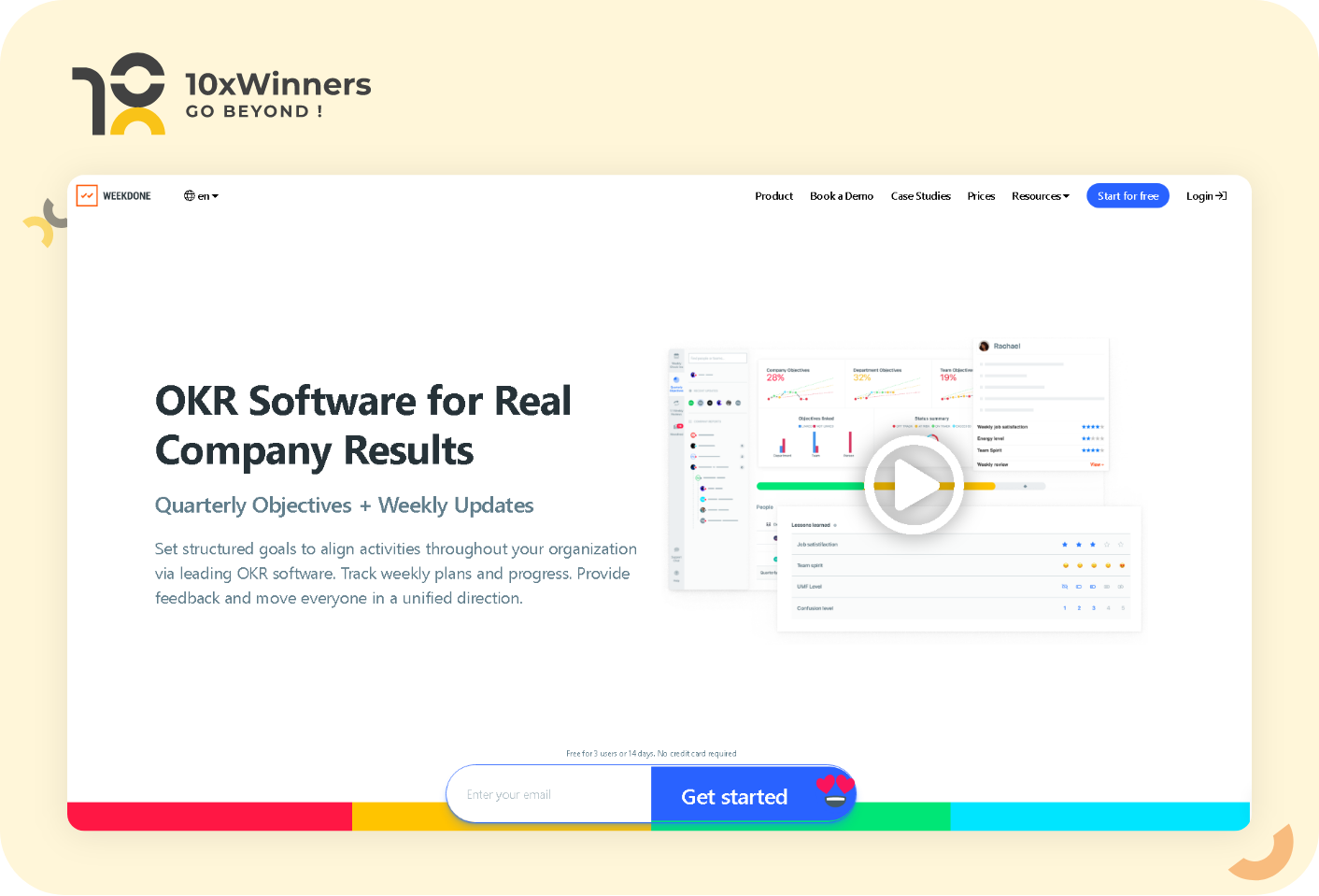

 for growth seeking organizations.
for growth seeking organizations.
Comments are closed